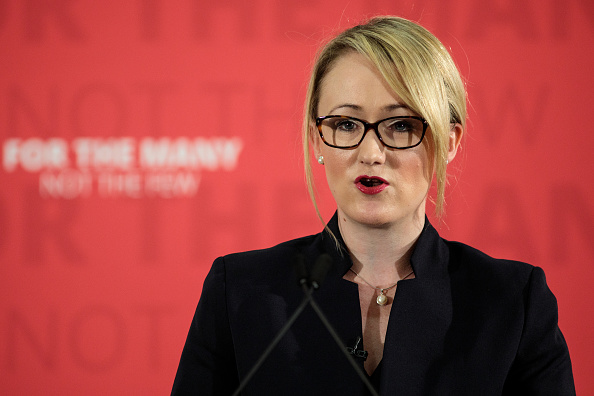DECISION 2020: LEFTISTS AND CENTRISTS GO HEAD TO HEAD, AGAIN
While the Conservative party has more or less had a consistent political identity for the past 50 years, the same cannot be said for Labor which has traditionally been a socialist party that favored policies such as public ownership of industries. As a matter of fact, clause 4 of the party’s constitution advocated for the public ownership of the means of production. It wasn’t until Tony Blair became the leader of the party in the 1990s when he rebranded the party to become more centrist and free-market embracing. Thus, “New Labor” was born, and with it came the amendment of clause 4 which removed the socialist ideals of the party. Despite initial popularity, New Labor’s public approval would wane over the next decade. Jeremy Corbyn’s leadership election in 2015 marked another identity shift in the party, as it once again started moving back to its leftist ideology. This marked a new war within Labor which placed centrist members against their leftist equivalents, but another Corbyn victory in the 2016 Labor leadership election meant that the party would remain left-leaning for the foreseeable future. It seems now that the party could be on the verge of a second identity crisis, as left-leaning candidates are set to take on centrist candidates in this year’s leadership race. As it stands, the final six candidates have been named and if polls are correct, then the frontrunners in this leadership race will be Sir Kier Starmer and Rebecca Long Baily. These two candidates represent the competing spectrums of Labor, with Starmer representing the centrists and Baily representing the leftists.
LONG BAILY AND CORBYN’S SHADOW
It is evident that Baily has an advantage over other candidates, namely the fact that she has a background that can help her appeal to the typical Labor voter, many of whom opted to vote for the Tories in the last general election. She has a Northern background; her father was a working-class man who also represented trade unions. She spent her youth years working various jobs, such as a post carrier and in a furniture factory before studying at Manchester Metropolitan University. In short, she has not had the privileged upbringing that has become typical for most high profile politicians at Westminster. She emerged up the ladder of the Labor party in 2015, a year when she achieved two major milestones. The first one was during the 2015 General Election when she was elected the MP for Salford and Eccles and a few months later in September the then newly elected leader Jeremy Corbyn appointed her into the shadow ministry.
Given her left-leaning stances, she became one of Corbyn’s most trusted colleagues having remained in his shadow cabinet to this day. Out of all the candidates, she is the one who is most aligned with Corbyn’s policies and stances. In her article to The Tribune, she officially announced her candidacy for the party’s leadership, she additionally vehemently defended Jeremy Corbyn, his policies and election manifesto. It is her opinion that the reason why Labor suffered such a devastating loss, wasn’t because of its campaign promises but rather because of its incoherent campaigning. In the day after the election, Opinium published a poll where they asked those who did not vote Labor on their reason behind their choice. The poll showed that 43 percent cited the leadership of Labor as the main cause behind their decision not to vote for the party, 17 percent said it was the party’s stance on Brexit and finally 12 percent said their economic policies. More telling is the fact that 45 percent of Labor voters who defected to the Tories during the last election said that Corbyn’s leadership was the main driving force, while only 6 percent said it was because of the party’s economic policies. This shows that Long Baily is right about one thing and wrong about another; she was right to say that the party’s manifesto (with the exception of its Brexit section) wasn’t the cause of Labor’s loss, however, she is wrong to passionately defend Corbyn since he is the largest factor that resulted in their electoral losses.
In an ill-advised move, during an ITV interview, she rated Corbyn’s leadership a “10 out of 10” and asserted that the negative press he received diminished his public image. While it is true that many sections of the media haven’t been kind to Corbyn, he has done little to address the grievances that the press had with him and quite frankly Corbyn’s past did make him rather unelectable. One shouldn’t forget that his friendliness towards terrorist and extremist groups was a major concern for the electorate, for instance, a video of him from 2009 shows him calling Hezbollah and Hamas “our friends” and more recently a report showed him doing a Muslim Brotherhood salute. Moreover, he failed time and time again to address the antisemitism within the Labor party, showing that he, at best, is indifferent to such radical views or, at worst, is supportive of such radical views. While Long Baily has been one of Corbyn’s trusted right-hand colleagues, it is paramount for her to start distancing herself from him because the polls show that the party’s economic policies are popular with Labor’s traditional base, it was just the party’s confusing Brexit plan and Corbyn’s leadership that blew them out of the water. Furthermore, MPs within her party will most likely want to distance the party away from Corbyn and the fact that she still publically praises him and his leadership will not bode well with her colleagues. To gain the trust of other party members and regain votes from the public, she will need to put forward a clear strategy that addresses the grievances of the electorate, she will also have to illustrate how her democratic socialist plans will come into operation and why they will be effective.

KEIR STARMER: THE RISING CENTRIST
Like Long Baily, Starmer was first elected into parliament during the 2015 election, when he became MP for Holborn and St Pancras. Moreover, he has also been part of Corbyn’s shadow cabinet but has not been shy to voice his disapproval of the leader. For instance, in 2016 he resigned as Shadow Home Secretary to protest Corbyn’s leadership, but he would return later after the referendum to become Shadow Brexit Secretary. In his role, he utilized an old parliamentary procedure called the “humble address” to force Theresa May’s government to publish the legal advice on its final Brexit deal, something that already made the shining star more prominent in the party. Before his entry into politics, he was a lawyer who represented workers in a number of cases, and he was famously part of the defense team for Steel and Morris in the McLibel case. Nevertheless, it should be noted his time as a lawyer also had him take some right-wing stances, for example, he defended MI5 and MI6 agents accused of using torture during the Iraq War, and he also chose not to persecute police officers who had mistakenly murdered two civilians. He is, however, so far the favorite to win the leadership race, given that he was the first candidate to reach the nomination threshold from 22 Labor MPs, moreover, he managed to secure the backing of Unison, the largest trade union in the UK. Although he hasn’t given any particular promises during the campaign, he has displayed himself as a unifying figure that can unite the party and bring it back to winning ways. One thing is for sure, his experiences as a lawyer and his challenge against the May government have shown that he is capable of winning, something the Labor party is desperate for.










